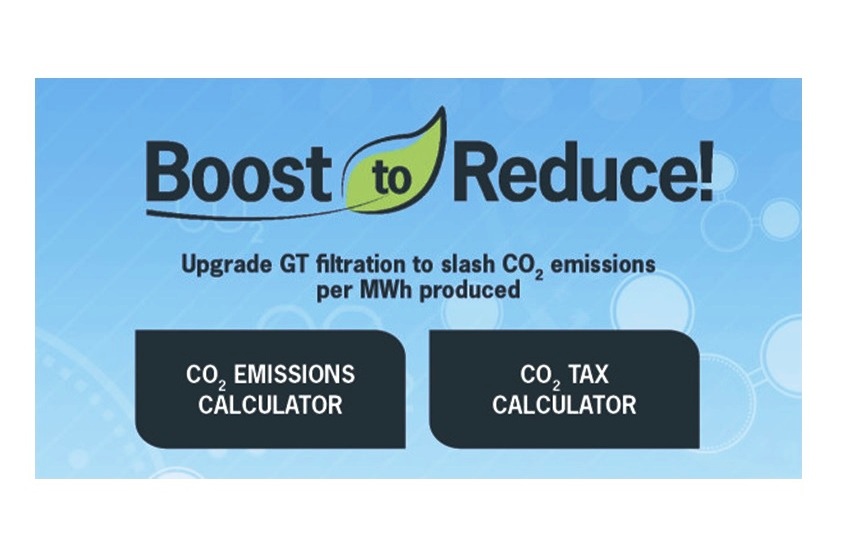There are many established methods of cutting CO2 intensity (ratio of the amount of CO2 generated per unit of energy) such as carbon scrubbing, combustion carbon capture, and upgrading the gas turbine. However, all of these require high capital expenditure and additional infrastructure to be built. Upgrading intake filters is the best method of cutting CO2 because inlet system retrofits can be done on the existing infrastructure
Improved air inlet systems are the simplest and smartest way to reduce the CO 2 intensity of your operations. They also improve engine performance so that your turbine engines produce more power at a lower environmental impact. So, boost to reduce!
Camfil Power Systems, an industry leader in environmentally conscious filtration solutions, has designed new and advanced calculation tools to help gas turbine operators in the Power Generation and Oil & Gas industries. The new tool will calculate the potential carbon savings that can be achieved by upgrading filtration systems. Calculations are based on Camfil’s Life Cycle Cost Analysis, which measures the impact of fouling on an engine depending on the efficiency class of its filtration system. EPA filtration 1 is only one element that improves engine efficiency, as hydrophobic properties along with low, stable pressure drop also help to keep heat rate and carbon intensity low. Higher rated efficiency hydrophobic filters with low and stable pressure drop protect gas turbines the best against all weather conditions, reducing fouling and corrosion. The engines run more efficiently, which cuts CO2 emissions per megawatt hour produced.
Both the CO 2 emissions calculator and the CO2 tax calculator are part of Camfil’s initiative ‘Boost to Reduce’.
- The CO2 emissions calculator can help experts calculate how much excess carbon is being emitted due to fouling because of inadequate filtration systems. Based on operational input data like: 288 MW average power demand, initial 9295 MJ/MWh heat rate, 8000 yearly operating hours, with an installed final filter class F8, it is calculated that fouling causes roughly 18 206 additional tonnes of CO2 emissions per engine, per year.
With an upgraded E12 efficiency filter solution, emissions could be reduced by 16 159 tonnes while producing the same 2.3 million MWh per year.
- The CO2 tax calculator can help industry experts calculate how much tax money can be saved by upgrading to advanced filtration solutions. Based on the same operational input data as above and considering a $20 USD CO2 tax rate per tonne of emissions, 8% net profit margins, it is calculated that turbine operators can reduce taxes by $363 184 USD per engine, per year bottom line. Or, when assuming an average selling price of $35 USD per MWh produced, you would be required to produce an additional 57 711 MWh extra within the same fiscal year to generate the same bottom line result.
“Thanks to high quality, hydrophobic, EPA efficiency filters, it has never been easier for turbine operators to reduce their carbon footprint while simultaneously improving engine availability, reliability and generating more savings”, says Marc Van den Eynde, Vice President Camfil Power Systems.
Depending on your environment, you could eventually reduce emissions even further than expected.
To learn more about reducing your carbon footprint with advanced Camfil filtration solutions, please contact:
